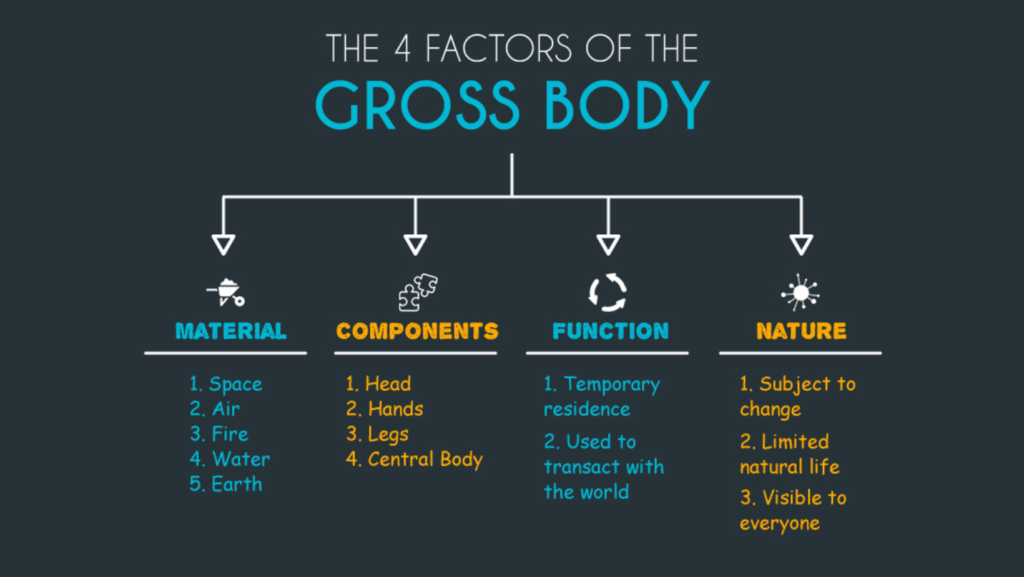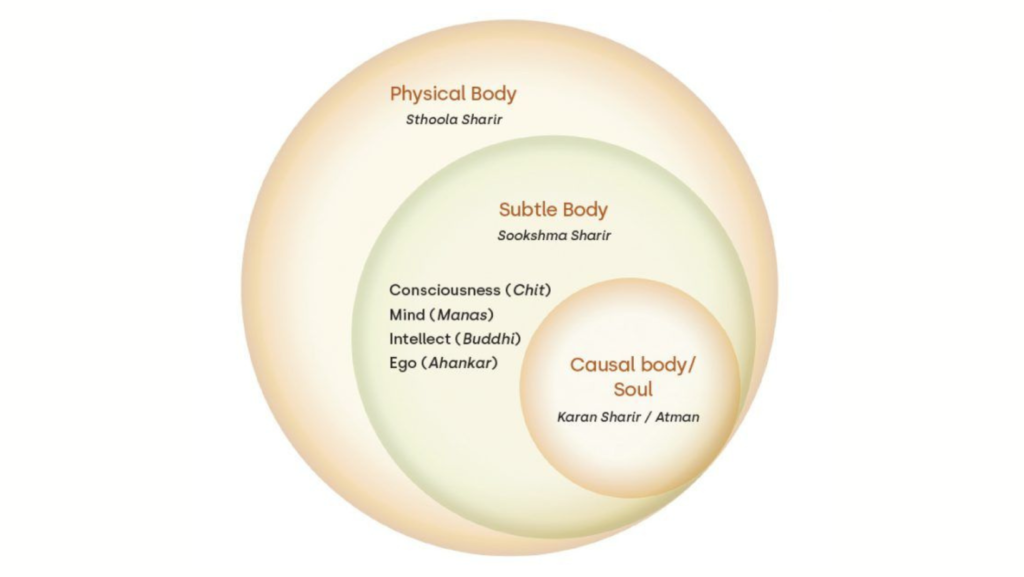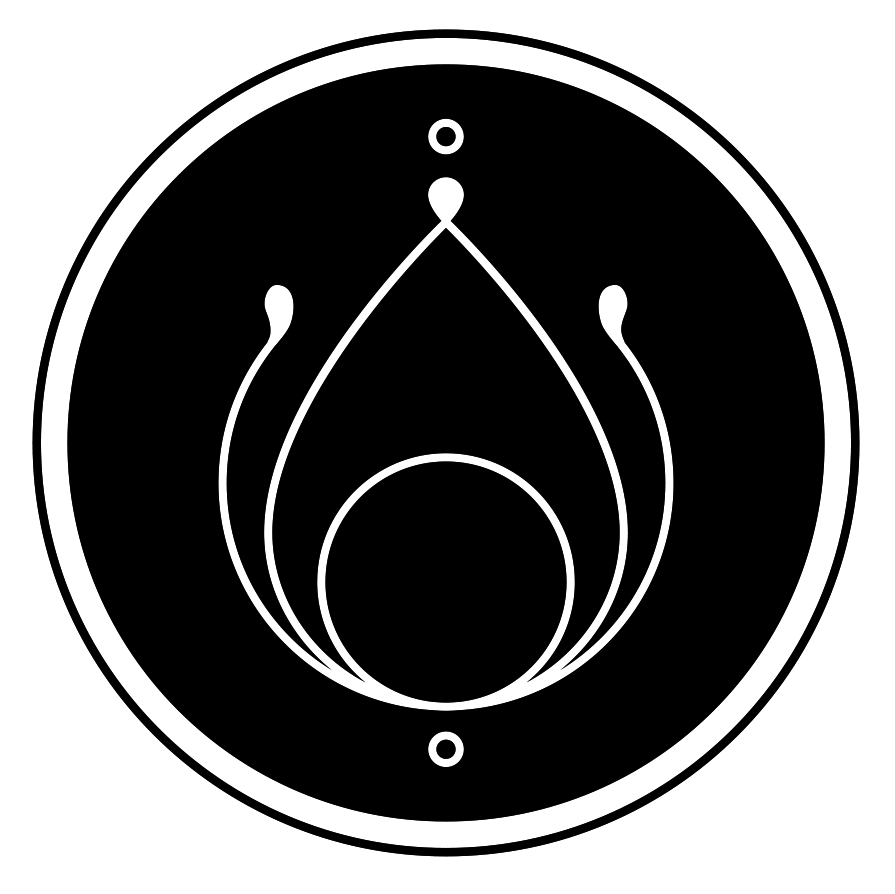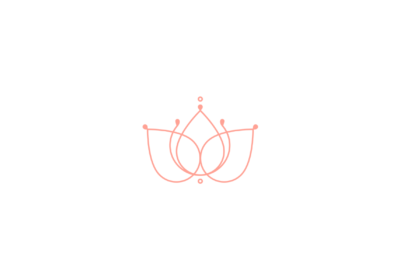Sthūla Śarīra – Physical Body

“The physical body is not only a temple for our soul, but the means by which we embark on the inward journey toward the core.”
~ B.K.S. Iyengar, Light on Life
Sthūla means Grossness / bulkiness.
Five Gross Elements: The Sthūla Śarīra is composed of the five gross elements Pañca Mahābhūta: earth (Prithvi), water (Apas), fire (Tejas), air (Vayu), and ether (Akasha). Each of these elements contributes specific qualities to the gross body, such as solidity, fluidity, heat, movement, and space. The human physical body is made of a material and has its own function. Here we will explore all components of human physical body.
MATERIAL / ΥΛΗ
The yogi scriptures tell us that the Gross Body / Physical body is made out of gross matter, which in turn is in the form of 5 gross elements. This Matter is composed of 5 gross elements:
- Space
- Air
- Fire
- Water
- Earth
That a human body is composed of these 5 elements can easily be proved by analysis. A human body occupies space, has fire element in the form of body temperature, has air element in the form of life breath, has a significant amount of water within it, and has earth element to give it solid form.

SEVEN PRIMARY SENSES / ΟΙ 5 ΒΑΣΙΚΕΣ ΑΙΣΘΗΣΕΙΣ
The Chyle (Rasa), blood (Asra), flesh (Mamsa), fat (Medas), bone (Asthi), marrow (Majja) and semen (Sukla)
FUNCTION / ΛΕΙΤΟΥΡΓΙΑ
It is perfectly explained in the teachings of Swami Paramarthananda and James Swartz as:
- The scriptures say that the body is a temporary residence used by an individual (Jīva). It is like a house taken on rent.
- The rent payment is in the form of Karma; both good Karma (puṇya) & bad Karma (Paap). As long as there is Karma waiting to fructify, the body is available.
- If there is no more Karma, then there is no reason for the Jīva to keep occupying a body.
- Therefore, a body is a temporary residence we use to transact with the world.
NATURE / Η ΦΥΣΗ ΤΟΥ
The features of the gross body:
a. The body is of a changing nature. It is subject to modification.
b. The body is visible to both myself as well as others. It is not only I who can experience my body, but others can also experience, see and touch my body.
c. The body has a limited natural life, and it ceases to exist beyond a specific age set by nature.
GROSS BODY AND MODIFICATIONS / ΥΛΙΚΟ ΣΩΜΑ ΚΑΙ ΟΙ ΜΕΤΑΛΛΑΓΕΣ ΤΟΥ
During course of it’s life physical body goes under those 6 modifications:
- asti: IS, but don’t see it. It is in unmanifest. Also applies to stage where potential is in baby form, but in womb.
- jāyate: Baby is born. Meaning, it takes it’s first breath of air.
- vardhate: Growth into infant. Limbs strengthen. Muscle develops. Mind absorbs environment. Language is learned. Self-consciousness is developed.
- viparīnamate: Maturity-puberty. Peak of growth (stage 3) is reached. Hair grows in sexual region, breasts develop, voice breaks, intellectual reasoning enjoyed. At this stage, male/female has grown to 95%+ of full growth capacity.
- apakṣīyate: Slow decay of instrument. Like anything born, it exhibits stage of peak maturity, then begins gradual process of decay/weakness/loss.
- vinaśyati: Death. When decay of instrument reaches a point where it can’t keep itself alive/functioning any longer, then entire instrument STOPS. Body gains a new name (nāma), corpse. It goes back to 5 elements like anything else in Creation.



